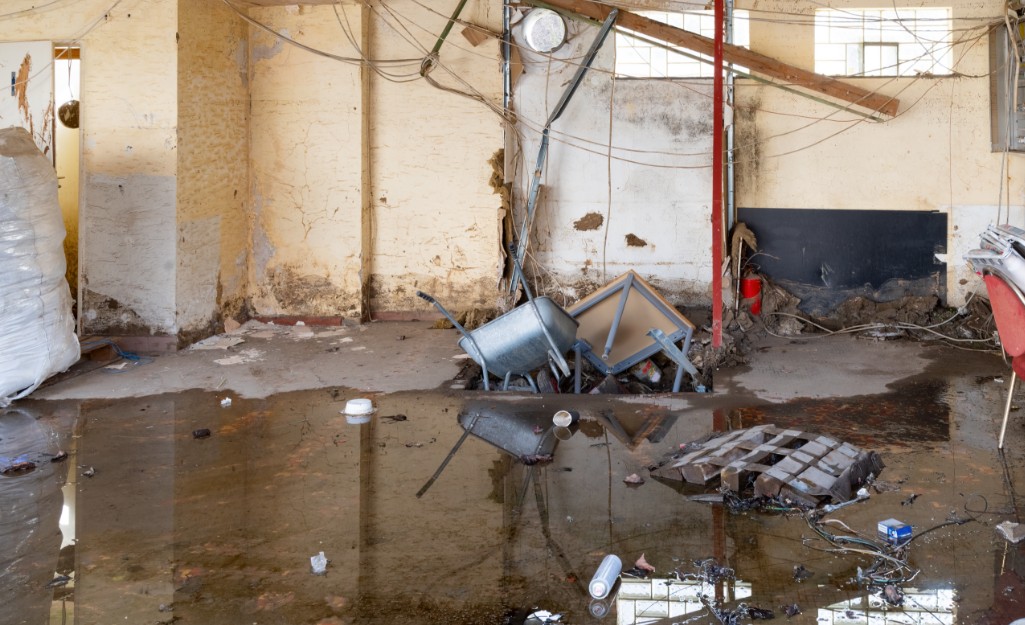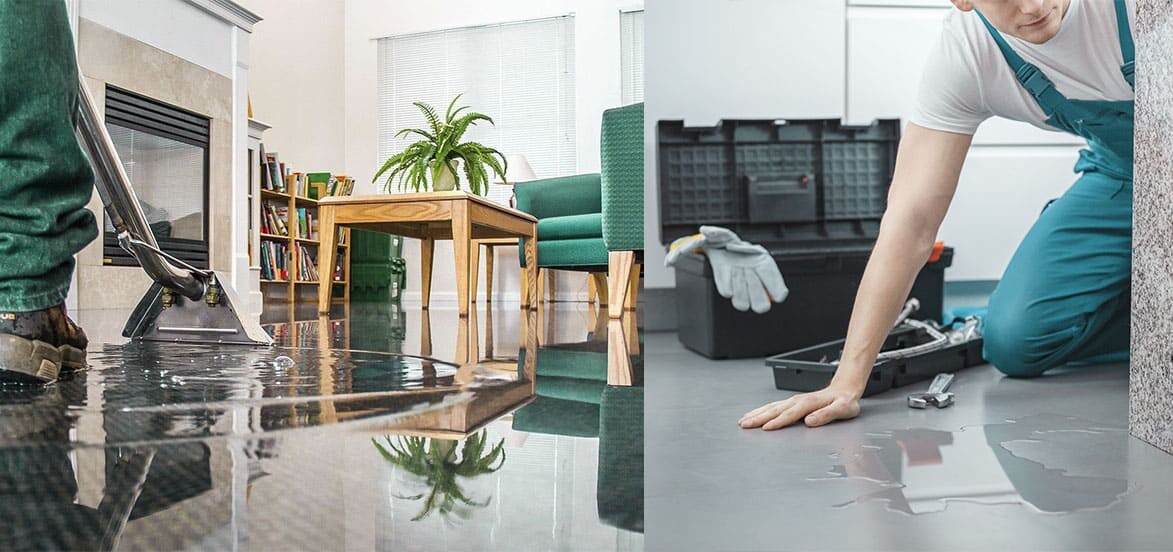What to expect when you schedule Flood Cleanup Services
Water Damage Restoration 101: Recognizing the Process and Expense
Water damage can strike suddenly, leaving property owners in a state of complication. Comprehending the repair procedure is crucial for efficient recuperation. From examining the damage to picking the best company, each step influences the overall end result and expense. Elements such as the sort of water damage and urgency likewise play a substantial function. What are the details strategies used in reconstruction, and just how can one get ready for potential expenditures?
Types of Water Damage

First Analysis and Inspection

Water Extraction Strategies
Following the first evaluation, reliable water removal methods are utilized to alleviate damage and protect against more problems. These strategies entail using customized devices such as industrial-grade vacuums and completely submersible pumps - Emergency Water Removal. The selection of technique depends on the volume of water present and the kind of materials influenced. For standing water, submersible pumps are typically used for fast removal, while vacuum cleaners are suitable for extracting water from rugs and upholstery. Additionally, progressed techniques like water extraction floor coverings may be used for hard-to-reach areas - Water Damage Restoration. The objective is to remove as much water as feasible, lessening the capacity for mold growth and structural damage. Prompt and reliable water extraction is crucial in the overall water damage remediation process
Drying and Dehumidification Process
As soon as the water extraction is full, the drying and dehumidification procedure becomes critical to bring back the affected area. This stage generally utilizes industrial-grade dehumidifiers and air movers to efficiently minimize dampness levels. The dehumidifiers pull in wet air, removing excess moisture, while air moving companies circulate air to increase dissipation. Tracking equipment is typically used to track humidity and temperature degrees, making certain perfect drying out problems. The period of this procedure can differ depending on the degree of the water damage and environmental elements. It is necessary to extensively completely dry all influenced materials, including wall surfaces, floor covering, and home furnishings, to prevent mold and mildew growth and architectural damage. Proper execution of this step is important for an effective remediation result.
Cleansing and Disinfecting Damaged Locations
A complete first assessment and inspection of affected locations is essential to identify contamination degrees when the drying process is complete. Flood Cleanup Services. Reliable cleansing methods and proper products have to then be employed to eliminate particles and stains. Sanitization and sanitation techniques are necessary to ensure that hazardous pathogens are removed, restoring the room to a safe condition.
First Evaluation and Examination
Prior to beginning any reconstruction efforts, a detailed initial evaluation and evaluation of the impacted locations are important for reliable cleaning and sterilizing. This process includes determining the extent of water damage, identifying the source of the water breach, and evaluating the products affected. Examiners generally seek indicators of mold and mildew development, structural honesty issues, and damaged belongings. The assessment likewise includes inspecting moisture levels making use of customized tools to assure no covert water pockets remain, as these can cause additional difficulties. Recording the findings is vital for intending the next steps in the repair procedure. A comprehensive preliminary analysis makes it possible for remediation experts to create a targeted technique for reliable cleaning and sanitizing, ultimately reducing damage and health dangers.
Cleaning Up Strategies and Products
Reliable cleansing and disinfecting of water-damaged locations need a variety of strategies and products customized to the specific products influenced. For permeable surface areas like drywall and carpets, removal techniques are important to remove excess wetness, followed by deep cleansing with specialized cleaning agents. Non-porous materials such as ceramic tile or metal can be cleaned using commercial-grade cleaners that effectively get rid of impurities. Steam cleansing is another effective strategy, specifically for carpetings and furniture, as it utilizes high temperatures to eliminate microorganisms and mold and mildew (Flood Cleanup Services). In addition, green items are significantly prominent for their safety and security and efficiency - Water Damage Restoration. Inevitably, picking the suitable cleaning approaches and products not just ensures immediate sanitation however also help in preventing further damage and carcinogen linked with water intrusion
Sanitization and Disinfection Methods
When dealing with water damage, appropriate sanitization and disinfection techniques are vital to guarantee the safety and security and health of the affected setting. After first cleaning, surfaces should be treated with appropriate anti-bacterials to eliminate virus, mold, and germs that thrive in wet conditions. Typical approaches include the use of EPA-approved chemical disinfectants, which can be applied through spraying or wiping techniques. Furthermore, ultraviolet (UV) light systems can effectively sanitize areas by counteracting bacteria without severe chemicals. The selection of method frequently depends upon the kind of products affected and the degree of contamination. Inevitably, complete sanitization not only restores a secure living space but likewise assists stop future health and wellness threats connected with sticking around wetness and mold and mildew growth.

Fixings and Restoration Options
Evaluating the damage brought on by water direct exposure is important for determining the ideal repair services and repair options. Property owners may deal with various problems, including damaged drywall, deformed flooring, and endangered structural components. Depending upon the degree of the damage, repair work might involve replacing areas of drywall, setting up brand-new floor covering, or reinforcing architectural beam of lights. In cases of extreme damage, full replacement of affected materials may be required. Furthermore, professional conservators typically advise using dampness meters to assess concealed wetness degrees before selecting the ideal training course of activity. It is very important to act immediately to stop mold and mildew growth and further wear and tear. Picking the best options not just brings back the residential or commercial property but additionally guarantees lasting safety and security and performance.
Aspects Affecting Restoration Expenses

The level of water damage directly affects the remediation costs home owners can anticipate to sustain. Variables such as the source of the water, the period of direct exposure, and the damaged products greatly influence pricing. Clean water damage from a busted pipe is usually less pricey to restore compared to damage caused by sewage. In addition, the degree of contamination dictates the demand for specialized cleaning and disposal services, further boosting expenditures. Geographical area also plays a role, as local labor rates and accessibility of restoration services can vary. The necessity of the reaction impacts expenses; quicker treatments usually lead to decrease general costs by preventing more damage. Comprehending these elements is essential for house owners when approximating remediation expenses.
The 3 key kinds of water damage are categorized based on contamination levels: clean water, gray water, sites and black water. A thorough preliminary evaluation and examination are important steps in the water damage remediation procedure. For standing water, completely submersible pumps are usually made use of for fast removal, while vacuums are excellent for drawing out water from carpets and upholstery. The level of water damage directly influences the restoration sets you back property owners can anticipate to incur. Tidy water damage from a damaged pipeline is normally much less pricey to restore contrasted to damage caused by sewer.